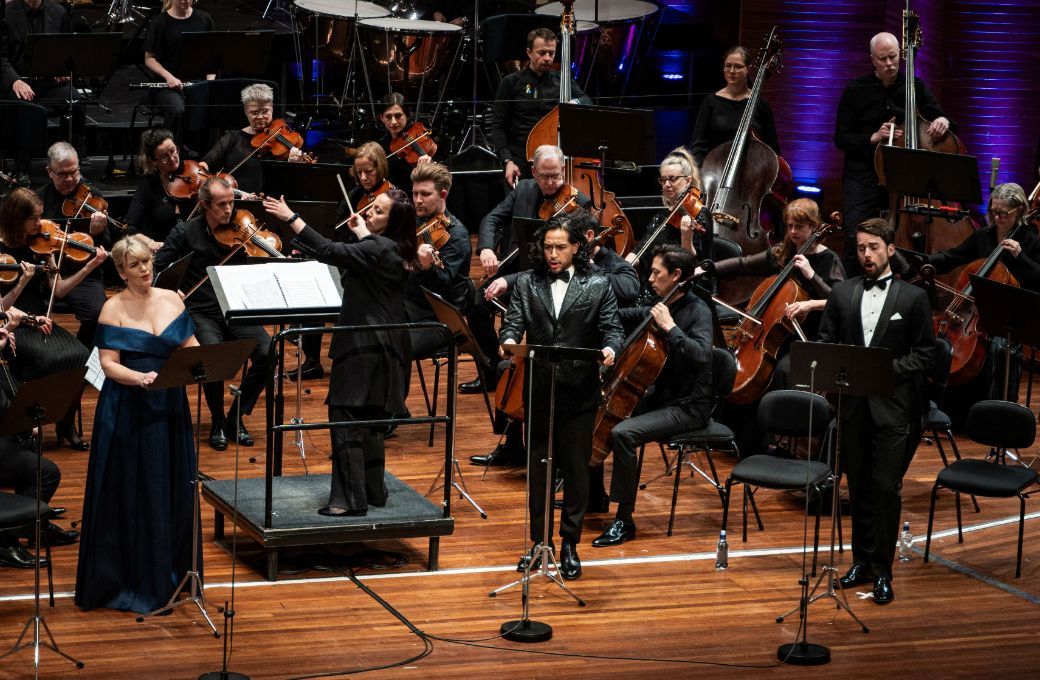Rossini retired from opera composition at the height of his fame and may have spent much of the remainder of his career devoted to charming vocal and piano miniatures, but he also created sacred works of an unusual kind of theatricality. Among these his Stabat Mater divided opinion following its 1842 premiere for its often jovial, even playful and overly wordy take on the Virgin Mary’s grief. For modern audiences, though, the variety of moods and avoidance of unremitting solemnity is likely to be a plus, less about reverence and more about presenting a more rounded human experience, at turns solemn, lively and often beautiful. The New Zealand Symphony Orchestra, joined by Voices New Zealand Chamber Choir and a good quartet of soloists under Italian conductor Valentina Peleggi, brought this vividly to life in a programme that paired Rossini’s dramatic Stabat Mater with a modern reflection by New Zealand composer Victoria Kelly.

From the opening bars, with a warmly phrased solo bassoon line and a daringly soft first choral entry, this performance supplied a freshness and direct sincerity in its interpretation of Rossini’s masterwork. Under Peleggi’s baton, flexible rhythms and supple rubato brought the drama to life without ever over-egging the emotion. Voices New Zealand proved their technical mettle and stylistic adaptability, maintaining clarity and focus throughout, especially impressively even in the bustling fugue that closes the work.
Among the soloists, Filipe Manu sang the treacherous Cujus animam with poise, including the climactic D flat, though his interpretation felt a touch too introverted for Rossini’s jaunty march rhythms. Madison Nonoa’s soprano, light and free-floating, was ravishing whenever the line called for delicacy and shimmer but, like Manu, would have benefited from greater heft in more dramatic moments such as the Inflammatus, although her high Cs cut through the choir with impressive brilliance. Anna Pierard, the mezzo-soprano, offered seasoned phrasing and emotional insight, if not quite the same freshness of tone, and the soprano-mezzo duet was one of the evening’s highlights, the two voices blending in perfect alignment even through florid coloratura and neatly turned trills. The horns’ meltingly tender introduction set the mood ideally. The best of the four soloists was Jeremy Kleeman, billed as a baritone but amply covering the bass range down to the lowest notes with ease and resonance, his aria making a great impact. Later, the a cappella quartet, delivered with relaxed poise, provided a moment of radiant stillness before the exuberant choral fugue.
The unusual structure of the programme had it closing with New Zealand composer Victoria Kelly’s 15-minute contemporary response to Rossini’s work, an interesting contrast in every sense. Where the standard text used by Rossini venerates Mary’s suffering, Kelly’s newly written text questions it, reflecting on the expectations that the biblical conception of Mary has imposed on women throughout history. Her Mary does not merely weep or wait; she wields a sword instead, reclaiming agency from the historical narrative of passive grief. Kelly’s musical language is largely tonal but is flecked with occasional pungent dissonance. The opening evoked something of medieval plainchant, soon enveloped in a halo of wind sonorities and the shimmer of the singing bowl. The writing for chorus and orchestra was largely laid out in clear long lines, building to harmonically rich climaxes that balanced intensity with restraint. Heard side by side, these two Stabat Maters, neither of which a typical example of its kind, made for an evening of striking contrasts: faith and questioning, grief and strength, Rossinian energy and modern reflection.


